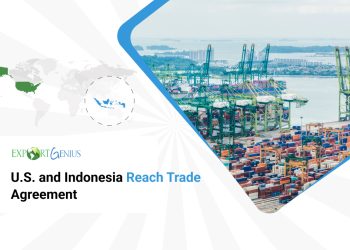Key Points
- President Donald Trump has threatened a variety of new tariffs for his second term in office, from universal baseline tariffs to country-specific tariffs.
- US President Donald Trump delayed his plans to impose 25 percent tariffs on Mexico and Canada.
- US has imposed a 10% additional tariff on imports from China.
- The Biden administration kept most of the Trump administration tariffs in place, and in May 2024, announced tariff hikes on an additional $18 billion of Chinese goods, including semiconductors and electric vehicles, for an additional tax increase of $3.6 billion.
- Academic and governmental studies find the Trump-Biden tariffs have raised prices and reduced output and employment, producing a net negative impact on the US economy.
The Donald Trump administration is aggressively planning to impose import tariffs on countries including China, Canada, Mexico, and India. The U.S. has already imposed 10% additional tariffs on imports from China, while they delayed the plan to impose 25% tariffs on Canada and Mexico. What would be an overall tariff impact on global trade? Would there be any negative impact on the US economy? Would US-China trade tensions escalate? Everything is explained in this article.
US-China Trade War
Although US President Donald Trump has delayed his plans to impose 25% tariffs on Canada and Mexico, the tariff war with China has escalated as America has imposed 10% additional tariffs on China. He has also announced an investigation into Google.
China stated that it would probe the US tech giant for alleged antitrust violations and slapped 15 percent levies on coal and liquefied natural gas, as well as 10 percent on oil and agricultural equipment from the US.
Visualize US-China trade in the past years!

| Year | US Imports from China | US Exports to China | Total Trade |
| 2019 | 470 | 106 | 576 |
| 2020 | 456 | 124 | 580 |
| 2021 | 540 | 151 | 691 |
| 2022 | 575 | 153 | 728 |
| 2023 | 448 | 147 | 595 |
****Values in USD Billion
US May Impose Tariffs on the European Union (EU)
The risk of further trade escalation has also increased, as Trump said that tariffs on the European Union (EU) would be imposed “soon” as they “do not take American cars, farm products” and that they “take almost nothing” while the US buys millions of cars, tremendous amounts of food and farm products.
Visualize US-EU trade in the past years!

| Year | US Imports from EU | US Exports to EU | Total Trade |
| 2019 | 526 | 337 | 863 |
| 2020 | 475 | 290 | 765 |
| 2021 | 560 | 333 | 893 |
| 2022 | 634 | 427 | 1,061 |
| 2023 | 655 | 443 | 1,098 |
****Value USD Billion
US Inflation Risk to Indian Exports
The US-based think tank Peterson Institute for International Economics (PIIE) said that Trump’s tariffs on Canada, Mexico, and China would cost the typical US household over $1,200 a year.
Notably, high inflation in the US and Europe last year dampened Indian exports of labor-intensive items such as gems jewelry, and textiles.
Visualize US-India trade in the past years!

| Year | US Imports from India | US Exports to India | Total Trade |
| 2019 | 60 | 34 | 94 |
| 2020 | 53 | 27 | 80 |
| 2021 | 76 | 40 | 116 |
| 2022 | 90 | 47 | 137 |
| 2023 | 87 | 40 | 127 |
****Values In USD Billion
Why does a Tariff War have a Domino Effect?
The 25% tariffs on Mexican and Canadian imports have hobbled the competitiveness of US-based manufacturers and have “tied running shoes on to the feet of US rivals in Europe and Asia.”
American cars are not truly made in America but are assembled there from parts produced in the US, Canada, and Mexico. With the 25% tariffs on these countries, the cost of US-made cars will become less attractive to American buyers, leading to increased imports from Japan, Germany, and Korea.
About half of US imported cars come from Japan, Germany, and Korea. They have not been subjected to the 25 per cent tariffs. What do you think will happen next? Almost surely, many US buyers will switch to German, Japanese, and Korean cars that the tariffs made relatively cheaper.
Tariffs Raise Prices and Reduce Economic Growth
Tariffs could reduce US output through a few channels. One possibility is a tariff may be passed on to producers and consumers in the form of higher prices. Tariffs can raise the cost of parts and materials, which would raise the price of goods using those inputs and reduce private sector output. This would result in lower incomes for both owners of capital and workers. Similarly, higher consumer prices due to tariffs would reduce the after-tax value of both labor and capital income. Because higher prices would reduce the return to labor and capital, they would incentivize Americans to work and invest less, leading to lower output.
Alternatively, the US dollar may appreciate in response to tariffs, offsetting the potential price increase for US consumers. The more valuable dollar, however, would make it more difficult for exporters to sell their goods on the global market, resulting in lower revenues for exporters. This would also result in lower US output and incomes for both workers and owners of capital, reducing incentives for work and investment and leading to a smaller economy.
The tariff war between the US and China will continue seriously and will split with other countries and regions including the EU, Canada, Mexico, and India. For all updates on how the Trump tariff would impact the global economy, follow Export Genius, a leading provider of import-export trade data.


















